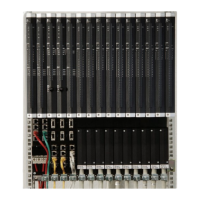HIMax System 5 Programming
HI 801 001 E Rev. 4.01 Page 75 of 122
i
In the examples illustrating the multitasking modes, input and output processing are
represented as empty spaces at the beginning and the end of each CPU cycle.
The multitasking mode can be set using the resource parameter Multitasking Mode, see
5.2.3.1 .
5.5 Loading User Programs
Use SILworX to load the project configuration with the user programs into the controller.
Two load variants exist:
Download
Load of a new project configuration with interruption of safety-related operation
Reload
Load of a modified project configuration without interruption of safety-related operation
i
HIMA recommends backing up the project configuration, e.g., on a removable medium,
after loading a user program into the controller.
This is done to ensure that the project data corresponding to the configuration loaded into
the controller remains available even if the PADT fails.
HIMA recommends a data back up on a regular basis also independently from the user
program load.
5.5.1 Download
Requirements for the download:
Controller in STOP
Resource enable switch set to Load Allowed
After a download, the user program must be launched in SILworX to start safety-related
operation.
Use the download function to load a new program into the controller or if one of the
conditions mentioned in the next section prevents using the reload function.
5.5.2 Reload
Requirements:
Controller in RUN
Enable switch Reload Allowed is set to ON.
System variable Reload Deactivation is set to OFF.
i
A reload can also be performed if the controller only contains one processor module.
During a reload, the user cannot use the PADT to operate on the controller!
Exceptions:
It is possible to abort the reload procedure and to modify the watchdog and target cycle
times in order to allow the reload.
If a user program already running in a controller is modified, HIMax allows one to load the
modified version into the controller by performing a reload. While the previous version of
the user program is still running, the new version is stored in the controller memory, tested
and provided with the variable values. Once the preparation steps are completed, the
controller adopts the new user program version and continues safety-related operation
seamlessly.

